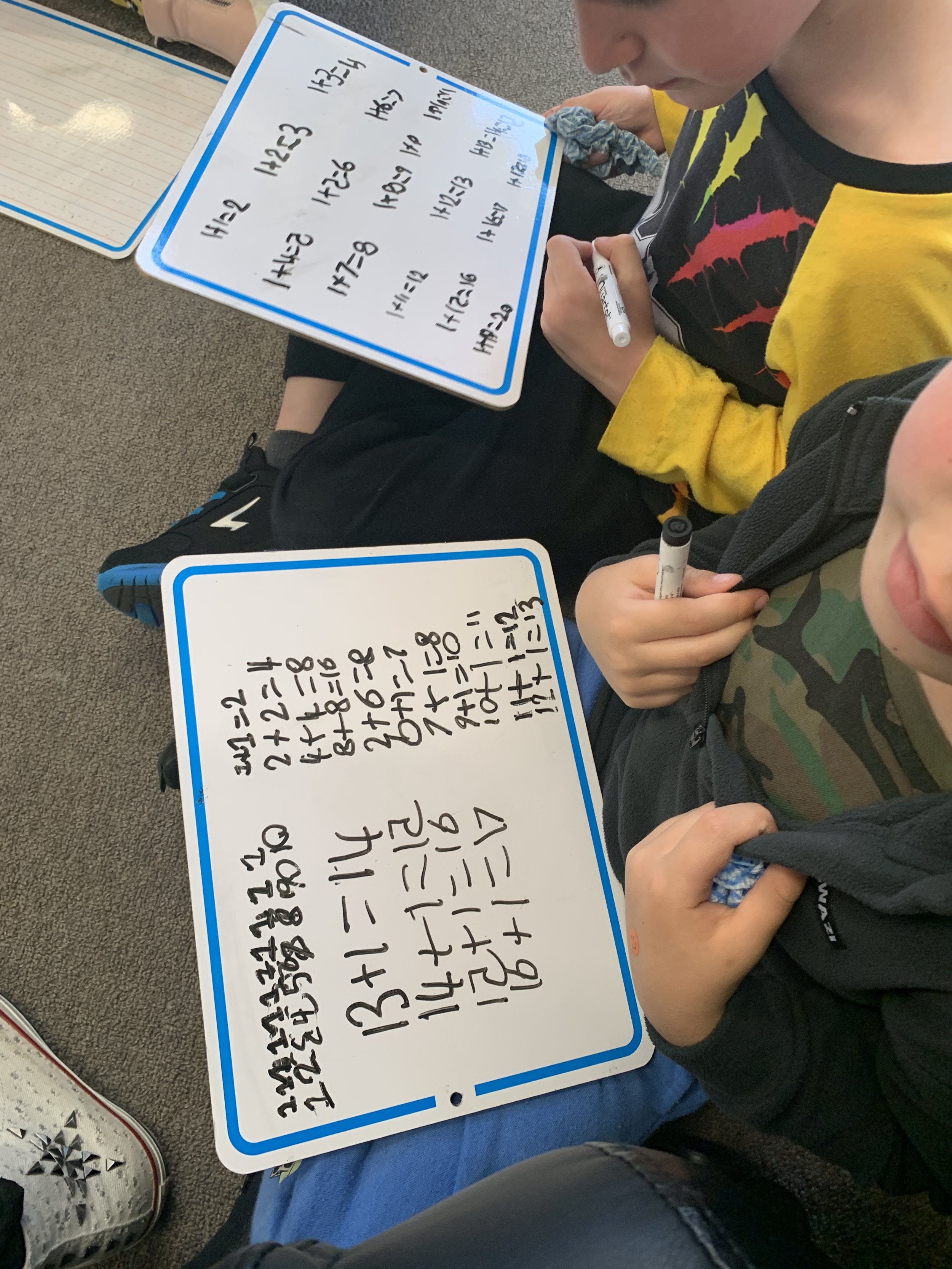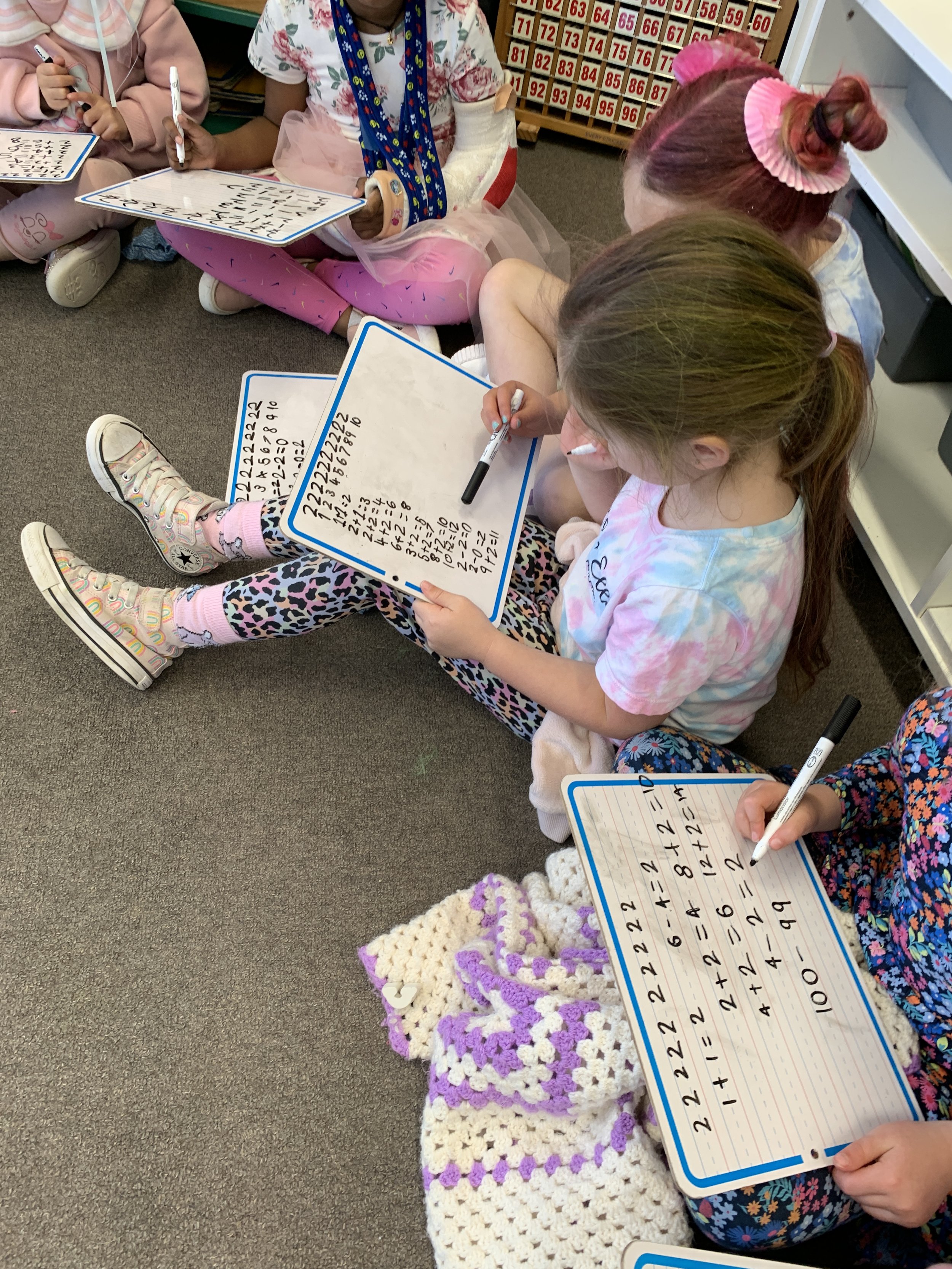Structured Maths
Lifting Maths Achievement
Tahi Maths is a teaching tool which brings to life the New Zealand Mathematics and Statistics Years 0-8 Te Mātaiaho Curriculum in a systematic way using a scope & sequence with engaging entry points.
Tahi Maths provides:
a scope & sequence for the systematic teaching of the New Zealand Mathematics & Statistics Curriculum Years 0-8 Te Mātaiaho (scroll down to find it on this page)
highly engaging entry points as part of a comprehensive maths programme which would include rich learning tasks
daily review of numeracy concepts with all strands (measurement, geometry, algebra, probability and statistics) taught at least once every term
opportunities for real life applications while developing deep conceptual numeracy knowledge
a predictable daily structure which reduces cognitive load
day one - a new number is introduced and the focus area is introduced or revised
day two - the new number is revised and represented in on paper or in an exercise book ready for sharing
day three - the second number of the week is introduced and the focus area is revised
day four - the second number of the week is revised and represented on paper or in an exercise book
day five is set aside for a rich learning activity such as a statistics investigation
Scope & Sequence
The scope & sequence ensures maths concepts are taught in a systematic and sequential way so that learning builds upon what is already known.
The numbers for each year level in sequential order so that ākonga can develop a deep understanding of each of the numbers conceptually and incrementally.
One aspect of NZ curriculum not included in the scope & sequence is “time”.
Kaiako are encouraged to create opportunities throughout the day to discuss the calendar and the time on the clock in a way that is relevant to their ākonga.
Click on the link to find the scope & sequence for your year level. Click on the Te Tau o te Rā/Number of the Day for the powerpoint presentation which contains movies (Year 0-2) and a visual for the See Think Wonder.
Tahi Maths Scope & Sequence Year 0-8
Te Tau o te Rā Number of the Day Year 0
Tahi Maths Scope & Sequence Year 1
Tahi Maths Scope & Sequence Year 2
Tahi Maths Scope & Sequence Year 3
Tahi Maths Scope & Sequence Year 4
Tahi Maths Scope & Sequence Year 5
Tahi Maths Scope & Sequence Year 6
Numeracy Assessment & Independent Practise or “My Number Learning”
This was written before the Te Mātaiaho curriculum was released however it could be useful for numeracy assessment & independent practise.
Each of the links on “My Number Learning” has a video explaining the concept along with some equations to complete.
Click on the link: Numeracy Assessment & Independent Practise
Check out progress over 12 weeks
Day 1
Introduce the Number
There’s no right or wrong when children have a go at writing equations using the number of the day.
Starting with the number 1 was super fun for my Year 0 & 1 ākonga/learners, every child was able to do something unique!
We learned so much from each other.
Day 1 Measurement
Ākonga/learners engaged in measuring objects around the room.
A group of ākonga/learners wanted to use the cuisenaire rods to measure the metre ruler.
This was highly engaging and fun.
Others found objects longer and shorter than the 10cm orange cuisenaire rod and took photos on Seesaw.
We ended our maths time with sharing the posts that were on Seesaw.
Day 2 Book Work
Ākonga/learned loved drawing a picture and writing equations which contained the number 1.
There’s no right or wrong!
Scope & Sequence Summary
Every year group has its own Scope & Sequence:
Year 1 - numbers to 20
Year 2 - numbers to 100
Year 3 - numbers to 1,000
Year 4 - numbers to 10,000
Year 5 - numbers to 100,000
Year 6 - numbers to 1,000,000
Every week has a Strand focus:
Week 1 Measurement - Length
Week 2 Measurement - Width
Week 3 Geometry - Reflection
Week 4 Geometry - Turns
Week 5 Statistics
Week 6 Probability
Week 7 Algebra
Week 8 Measurement - Perimeter
Week 9 Measurement - Area
Week 10 Algebra
See Think Wonder
See Think Wonder is a thinking routine from Harvard Graduate School of Education.
Thinking routines are tools specifically designed to help, support and guide mental processes or thinking.
Thinking routines originated from Project Zero’s Visible Thinking research initiative which included tools that teachers can use to find out more about what their children are thinking.
See Think Wonder is used daily as part of Te Tau o te Rā/Number of the day.
On the first day ākonga are presented with a picture of something to do with a strand, such as measurement. The first time the Year 1’s do this is with a picture of three objects. One shows a square with 1 Centimeter, a thin line with 1 Millimeter, and a baseball bat with a ruler with the word Meter. Children can talk to their Maths Buddy about what they see, think or wonder about.
As a group we talk together about the responses ākonga/learners have made. We talk about how small a millimeter is and show it on a ruler. We talk about the length of a centimeter and show it on the ruler and we bring out the meter ruler and talk about it being about the same length as a baseball bat.
On the second day ākonga/learners are presented with a picture of something to do with the number focus. The second day the Year 1’s do this it is with a picture of a grid of numbers which is an addition table where the number 1 is being added to numbers both across and down. We talk about the numbers and how the highlighted numbers on the diagonal are the same. We talk about the numbers that come next.
Daily Structure Explained
Day 1 Number & Strand
Number Video (Year 1 & 2)
There are many videos online to choose from. The Sesame Street Count Dracula one proved to be very popular with my Year 1 class. It’s a catchy tune, simple and repetitive. Numberblocks is always a great go-to. And Jack Hartmann is fantastic for children to get up and move to the beat before settling into their maths lesson.
Calendar and Clock
When the calendar has your birthday written on it, you are interested. By looking at the calendar, many concepts in our Maths Curriculum are addressed such as “identify how the passing of time is measured in years, months, weeks, days, hours, minutes, and seconds” as well as “name and order the days of the week, and sequence events in a day using everyday language of time”.
By looking at the clock we can identify where the hour hand is or how many more minutes until two o’clock and can practice counting by fives to work it out.
Number Visual - PV blocks, Abacus, Number Line
Starting with the tens board is a great way for ākonga/learners to consolidate their ability to subitize. The same if you look at a dice.
Cuisenaire rods are fantastic and children can start to see relationships between the rods such as two red ones being the same as four.
Whiteboards - write number & equations
The great thing about using whiteboards is that it doesn’t matter if you make a mistake, you can rub it out. It’s a great way for the teacher to see if a child needs help with number formation, if you want to go there, or with equations.
Strand - See Think Wonder
See Think Wonder from Harvard University is a powerful way for children to enter into maths where there is no right or wrong. The images used for this can be adapted to suit the ākonga/learners in your class.
Strand Activity (eg: measure using a ruler)
Every other day there is a strand activity that is a practical, hands on activity such as measuring, working with shapes or creating patterns.
End lesson with Sharing Time
It’s important to wrap the lesson up with some type of sharing, either sharing ākonga/learners Seesaw posts or something they have written in their maths books.
Day 2 Number Review & Book Work
Number Video (Year 1 & 2)
A different video or the same one as the previous day, depending on the children. Jack Hartmann’s videos are excellent as they have visuals showing the different ways numbers can be represented, such as on a number line or with tally marks.
Calendar and Clock
Having a daily routine lessens cognitive load and children love the predictable nature of knowing what they will be doing during Maths time. They know that there will be time to look at the calendar and maybe count how many more days until their birthday or another special event that is coming up.
Number Visual - PV blocks, Abacus, Number Line
Review numbers using the tens frame cards, abacus, number line, 100’s board. This is a time to subitize for the younger learners
Number Activity - draw and write equations in book (Teacher Model)
The teacher could model writing fact families or a pattern in their own maths book and ākonga/learners could do the same or make their own choice about what they write in their book.
Number Activity - draw and write equations in book
It’s empowering for ākonga/learners to choose what they will do in their books using the number of the day in their equations.
End lesson with Sharing Time
Share bookwork to show that it is valued and a way that we can all learn from each other.
REPEAT 2 DAY STRUCTURE WITH EVERY NUMBER
4 days a week for Number & Strand Focus
2 numbers each week
1 day for Maths Investigations such as Statistics or High Ceiling, Low Floor activities
Jo Boaler Talks About Math Traumatized Kids In School
Slow it down, have children go into depths with Maths, enjoy Maths and never associate speed with Maths.
Thank you Jo Boaler for giving me permission to share this video.

This New Entrant Maths Assessment is used at our school when ākonga first start with us.
We give them a few weeks to settle in & feel comfortable with school then we use this assessment to find out what they know and need to know about maths.
We love the question “Do you come to school on Saturday?”
One response we had was “No” and when asked why “because it’s not a sunny day.”
Contact us if you’d like a copy.




















